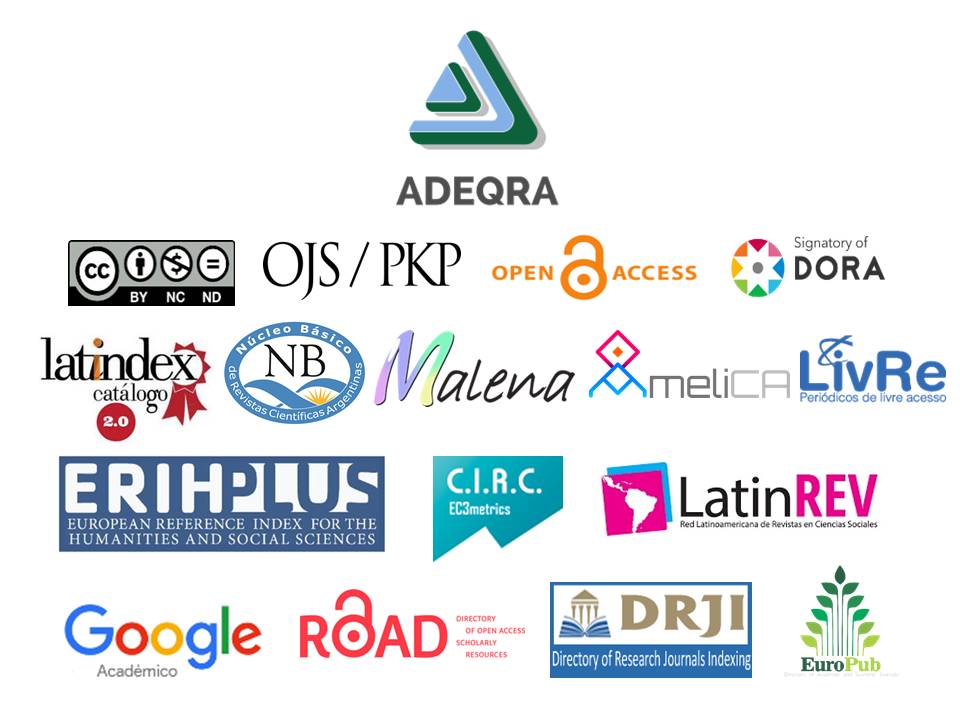Augmented Reality as a Disruptive Strategy to explore Organic Chemistry
Keywords:
augmented reality, organic chemistry, information and communication technologies, disruptive innovation, didactic resourceAbstract
This paper addresses the application of Augmented Reality as part of a new didactic resource, which aims to be an innovative tool that can support the pedagogical process in classrooms, in order to facilitate the learning of chemical concepts in students. Through research and technological development, the application of Augmented Reality technology is presented within the field of sciences. That is why within the area of Organic Chemistry is proposed AUMENTED, an educational platform developed by the research team, which allows the visualization of three-dimensional structures of chemical molecules with augmented reality. In the educational field it was possible to complement the teaching materials with virtual models that stimulate the perception and understanding of chemical concepts. Acceptance by students is reported to have increased over the two years of use.
References
Arredondo, L. A. L. (2020) Realidad Aumentada Móvil: Una estrategia pedagógica en el ámbito universitario. Revista Técnica de la Facultad de Ingeniería, Universidad del Zulia, 43(3), 142-149. http://dx.doi.org/10.22209/rt.v43n3a04
Araya Poblete, E. M. (2016). Aprendizaje de la química con realidad aumentada. Trabajo final de Ingeniería de Ejecución en Informática no publicada. Pontificia Universidad Católica De Valparaíso, Valparaíso, Chile. Recuperdo de: http://opac.pucv.cl/pucv_txt/txt-6500/UCD6685_01.pdf
Cerillo, S. R. (2020). Realidad aumentada y aprendizaje en la Química orgánica. Revista Apertura, 12(1), 106-117. http://dx.doi.org/10.32870/Ap.v12n1.1853
EDUCAUSE. (2015). Extended Reality (XR). Recuperado 30 de mayo de 2022, de https://library.educause.edu/topics/teaching-and-learning/extended-reality-xr
Guerrero, A. M. J. (2017). Realidad aumentada, realidad virtual e interacción tangible para la educación. XIX Workshop de Investigadores en Ciencias de la Computación, Buenos Aires, 1312-1316. http://sedici.unlp.edu.ar/handle/10915/62975
Martinez-Hung H. (2017). Modelos de Realidad Aumentada aplicados a la enseñanza de la Química en el nivel universitario. Revista Cubana de Química, 29(1), 13-25. http://scielo.sld.cu/scielo.php?script=sci_abstract&pid=S2224-54212017000100002&lng=es&nrm=iso
Merino, C. (2014). Realidad aumentada para el diseño de secuencias de enseñanza-aprendizaje en Química. Educación Química, 26(2), 94-99. http://www.revistas.unam.mx/index.php/req/article/view/52916
Ramos Geliz, F., Toscano Ricardo, A., Regino Vidal, C., & Galván Lozano, E. E. (2015). Objeto virtual de aprendizaje para la enseñanza de la Química del carbono soportado en dispositivos móviles y realidad aumentada. Repositorio Digital de Universidad Nacional Autónoma de México. https://reposital.cuaed.unam.mx:8443/xmlui/handle/20.500.12579/3950
Toala-Palma, J. K. (2020). La Realidad Virtual como herramienta de innovación educativa. EPISTEME KOINONIA, 3(5), 270-286. http://dx.doi.org/10.35381/e.k.v3i5.835
Published
How to Cite
Issue
Section
License
Copyright (c) 2022 Mario Fernando Bustillo López, Liliana Ferrer, Silvina Videla, Gabriela Ohanian, Sergio Vardaro

This work is licensed under a Creative Commons Attribution-NonCommercial-NoDerivatives 4.0 International License.



